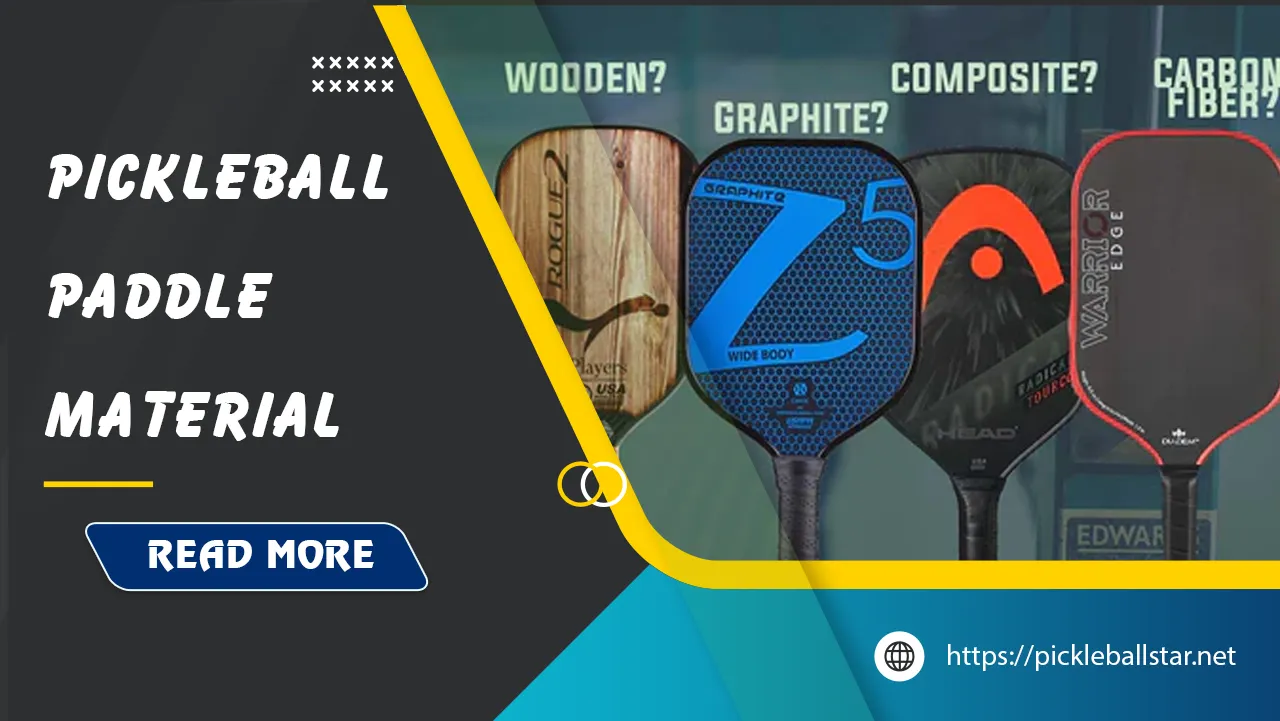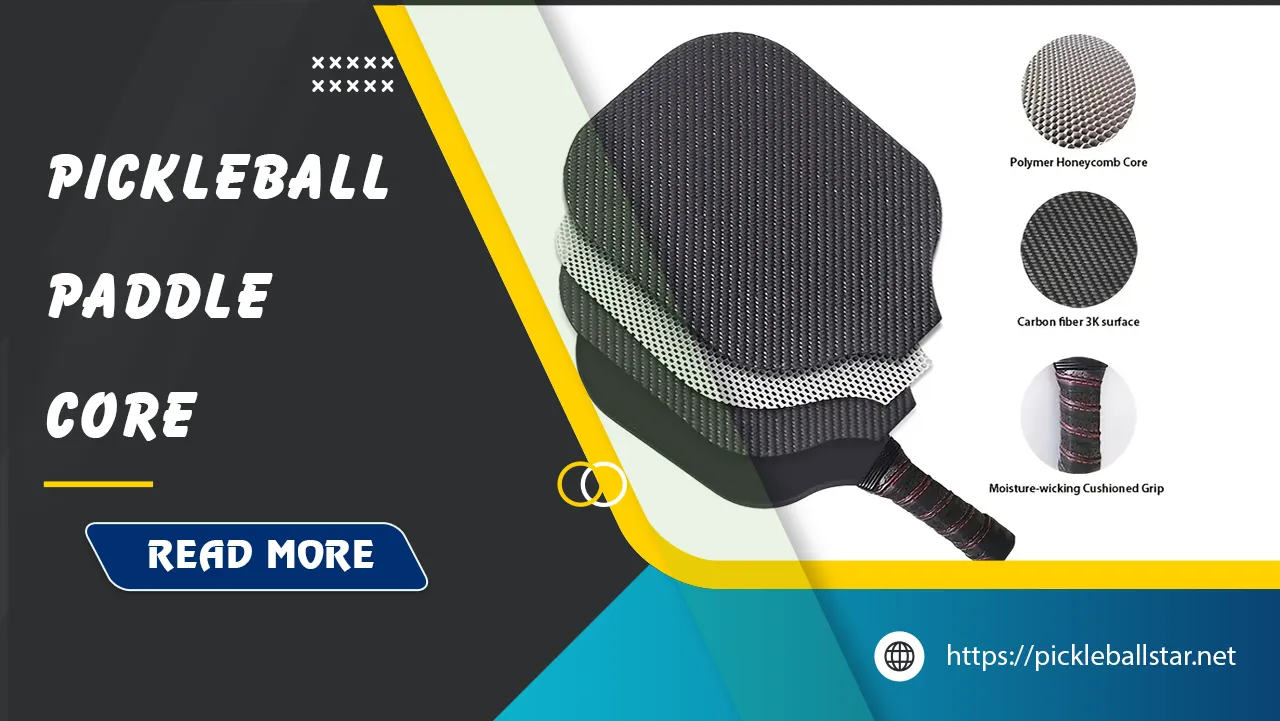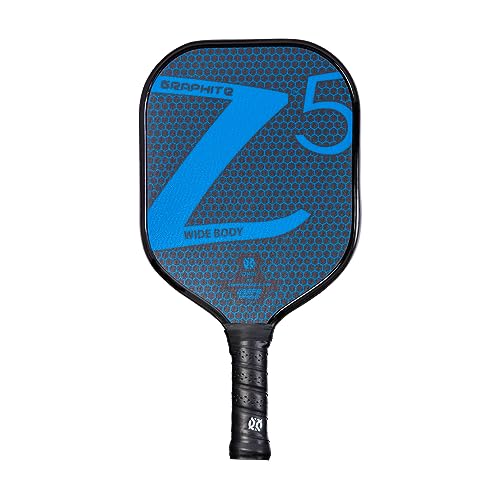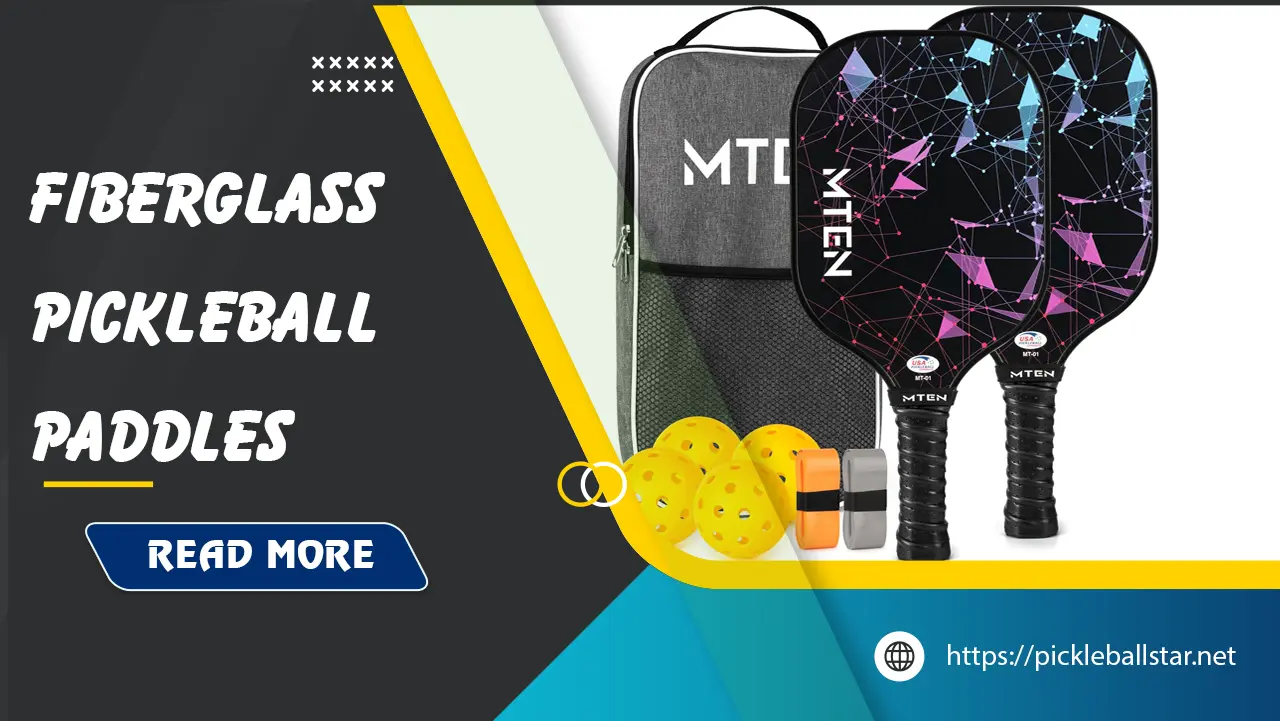Exploring the world of pickleball paddle materials
Pickleball paddle materials are more than just aesthetics; they play a crucial role in determining a paddle’s performance, feel, and durability. Understanding the advantages and disadvantages of different materials can help you make an informed decision about the paddle that best suits your playing style and goals. From classic fiberglass to modern carbon fiber and graphite, each material offers a unique blend of power, control, feel, and durability. Knowing the nuances of these materials can help you unlock your full potential on the court.

The Importance of Choosing the Right Materials
Choosing the right materials for your pickleball paddle can feel akin to selecting the perfect instrument for a symphony. The paddle is an extension of you on the court, shaping how you connect with the ball and, ultimately, the game itself. Think of each material as having its own distinct “personality” some are like the nimble fingers of a pianist, offering finesse and control, while others are akin to the powerful strokes of a drummer, delivering raw power and speed. Making an informed decision about paddle materials can thus be the difference between playing a harmonious game and fumbling through an off-key performance.
Core Materials: An In-depth Analysis
When delving deeper into the world of pickleball paddle core materials, one quickly realizes that the core isn’t just a segment of the paddle; it is the heart that beats life into the player’s performance. Each material resonates differently, offering unique benefits and varying challenges.

Nomex Cores: A Legacy of Strength
Nomex cores, with their historical lineage tracing back to the 1960s and usage in the aviation industry, are a prime example of technology being repurposed for sport. Nomex, a brand of high-performance aramid fiber first developed by DuPont, is famed for its incredible heat resistance and durability. In pickleball, these qualities translate into a core that is exceptionally rigid and tough.
Imagine a Nomex core paddle as a musical drum, producing sharp, clear tones with each strike. This rigidity allows players to generate significant power, making it ideal for offensive players who enjoy a fast-paced, aggressive game. The honeycomb structure enhances its durability and resilience, ensuring that the paddle can withstand intense play over time.
However, the downside is the extra weight and noise during gameplay. The heavier feel can be fatiguing, and the louder strikes may not be ideal for quieter environments or players who prefer a softer touch. Despite these considerations, serious players willing to embrace these attributes will find the Nomex core indispensable.
| Player Type | Advantages | Disadvantages |
|---|---|---|
| Offensive | Increased power, durability | Heavier weight, louder during play |
| Advanced | Enhanced control and precision | Less forgiving on mishits |
Polymer Cores: The Versatile Workhorse
Polymer cores, the so-called Swiss Army knife of paddle cores, offer a balance that few other materials can match. Composed of polypropylene, these cores are characterized by their honeycomb design, which ensures a blend of responsiveness and softness. The honeycomb structure is akin to a web – designed to absorb shocks and distribute weight evenly, thus providing both power and finesse.
For those who prioritize control, the polymer core is a godsend. Picture smoothly spreading butter over toast – the paddle’s response to ball impact is equally smooth and consistent. This quality is particularly beneficial for players who play a strategic game, utilizing dinks and soft shots to outmaneuver opponents.
Polymer cores also offer a quieter play, making them suitable for communal areas where noise control is a factor. Their lighter weight reduces arm strain, allowing players to sustain longer rallies without fatigue. The main trade-off, however, is a slightly diminished power output, which might not suffice for players who rely on forceful smashes.
| Player Type | Advantages | Disadvantages |
|---|---|---|
| Strategic | Excellent control, quieter play | Reduced power output |
| Beginner | Lightweight, forgiving on mishits | Less impact resistance |
Aluminum Cores: Precision at a Price
Aluminum core paddles are the connoisseur’s choice for those who demand accuracy above all else. The aluminum honeycomb structure provides a unique combination of strength and lightness, much like the aircraft wings that first popularized the material.
Playing with an aluminum core paddle is like handling a finely tuned instrument – every movement and stroke is dictated with exceptional precision. Such paddles distribute weight evenly, thereby allowing for smooth, controllable swings. This is particularly advantageous for players who emphasize placing the ball accurately rather than hitting it with brute force.
However, aluminum cores are susceptible to denting and can have a steep price tag. Moreover, while they offer precision, they may lack the same level of power output that Nomex and polymer cores provide. Thus, these paddles are more aligned with players devoted to developing touch and technique rather than dominating through sheer power.
| Player Type | Advantages | Disadvantages |
|---|---|---|
| Precision-oriented | Exceptional accuracy, lightweight | Prone to denting, high cost |
| Intermediate | Improved control and touch | Lower power compared to other cores |
Surface Materials: The Key to Connection
Surface materials, often referred to as the paddle’s face, are the initial point of contact between the player’s paddle and the ball. These materials can either amplify or detract from a player’s overall performance, making them critical in selecting the right paddle.
Graphite Surfaces: The Razor’s Edge
Graphite, a material composed of carbon atoms that form thin, flat sheets, is revered for its strength, stiffness, and lightweight properties. The sharpness of graphite can be visualized as handling a double-edged sword – it cuts swiftly and cleanly but requires skill to master without causing self-harm. Graphite paddles usually range between 7.5 to 8.5 ounces, providing agility without compromising resilience.

Beyond its lightweight nature, graphite surfaces offer quick responsiveness, allowing players to execute fast reflex shots with ease. The material’s inherent stiffness also lends itself to creating more pronounced spin and control over the ball. This makes graphite paddles a favorite among players who rely on strategic accuracy and ball manipulation.
In terms of pricing, graphite paddles sit within the middle to upper tier, ranging from $60 to $145. While the initial cost may be higher, the paddles’ durability and performance can justify the investment for players serious about enhancing their game.
Fiberglass Surfaces: The All-Terrain Solution
Fiberglass paddles evoke the reliability of an all-terrain vehicle – robust, adaptable, and versatile. Constructed from woven fiberglass cloth impregnated with resin, these paddles are heavier than their graphite counterparts, generally weighing between 8 to 14 ounces. The additional weight can translate into more substantial shots, enabling players to hit with greater power.

One of the standout features of fiberglass paddles is their textured surface, which facilitates better ball grip and spin generation. This is particularly beneficial for players who strategically use spin to outplay their opponents. Furthermore, the cost of fiberglass paddles is more accessible, typically ranging from $30 to $60, making them popular among beginners and intermediate players.
However, the heavier weight could be a double-edged sword. While it adds stability and power, it may also lead to quicker arm fatigue during extended play. It’s essential for players to strike a balance between leveraging the weight for power and managing the potential physical strain.
Composite Surfaces: Versatility Engineered
Composite surfaces, marrying elements of fiberglass, graphite, and sometimes carbon fiber, aim to deliver a balanced performance that captures the best of all worlds. They are akin to a hybrid vehicle, offering efficiency, power, and adaptability without one feature overpowering the other.
These paddles cater to a wide spectrum of players, providing a middle ground between power and control. For instance, paddles with composite surfaces might integrate a fiberglass face for spin and a graphite underlayer for enhanced control. This layered approach ensures that the paddle can adapt to various play styles, making it a versatile option for any player.
Carbon Fiber Surfaces: The Ultimate Performance Edge
For those who seek the pinnacle of performance, carbon fiber surfaces provide unparalleled stiffness and strength. Carbon fiber, renowned for its high tensile strength and low weight, generates immense power and precision. Utilizing a paddle with a carbon fiber surface is like handling a finely crafted weapon – it responds with unmatched accuracy, amplifying every move you make.
The downside? The cost. These Carbon fiber Pickleball paddles are often at the higher end of the price spectrum, but for serious players looking to elevate their game to the next level, the investment can be worth every penny.
| Surface Material | Weight Range | Characteristics | Player Type |
|---|---|---|---|
| Graphite | 7.5-8.5 ounces | Lightweight, precise, durable | Advanced players seeking control and quick reflexes |
| Fiberglass | 8-14 ounces | Heavier, textured for spin | Beginners to intermediate, power-focused players |
| Composite | Variable | Balanced performance, versatile | All-level players looking for a blend of features |
| Carbon Fiber | 7-9 ounces | Ultra-stiff, powerful | Competitive, high-performance-focused players |
| Aluminum | 7.5-9 ounces | Lightweight, precise | Players emphasizing control and accuracy |
Paddle Construction: Putting It All Together
Understanding how core and surface materials interact is vital for maximizing your performance on the pickleball court. While individual materials define specific characteristics, their interaction within the paddle construction culminates in a cohesive tool that can either elevate your game or inhibit your potential.
The Synergy of Core and Surface
Think of the paddle as a gourmet dish where each ingredient must complement the others to achieve a delightful result. A Nomex core paired with a graphite surface, for example, creates a paddle that is both powerful and precise, catering to advanced players who crave control without sacrificing attack power.
On the other hand, a polymer core, when combined with a fiberglass surface, results in a paddle that excels in control and spin, ideal for players who rely on tactics and placement. Understanding the interplay between these materials can guide you in selecting or even customizing a paddle that fits your unique needs.
Weight and Balance: The Final Consideration
Weight and balance are like the seasoning of a gourmet dish – too much or too little can skew the entire experience. When choosing a paddle, both the overall weight and its balance (head-heavy vs. handle-heavy) will significantly influence your game.
For example:
- Lightweight Paddles (6-7 ounces): These are perfect for defensive players who need quick reaction times. They afford greater control and are less tiring, making them suitable for extended rally play.
- Mid-Weight Paddles (7-8.5 ounces): These offer a balanced blend of power and control, making them versatile for various playing styles.
- Heavy Paddles (9+ ounces): These are excellent for those who rely on power and offensive shots. The additional weight can add force to your smashes but may cause quicker arm fatigue.
Balance is equally crucial. A head-heavy paddle shifts the weight towards the top, facilitating stronger hits but requiring more strength and control. Conversely, handle-heavy paddles are easier to maneuver and control, ideal for quick reflex plays and precision shots.
The Perfect Grip for Optimal Performance
The grip size and shape are akin to the ergonomics of a high-end pen – even the best ink flow means little if the pen doesn’t sit comfortably in your hand. Ensuring the correct grip size is imperative for both comfort and performance. A grip that’s too small might lead to over-gripping and potential injuries like tennis elbow, whereas a grip that’s too large can reduce your control over the paddle.
| Circumference Measurement | Suggested Grip Size |
|---|---|
| Less than 4 inches | 4-1/8 inches (Small) |
| 4 to 4.5 inches | 4-1/4 inches (Medium) |
| More than 4.5 inches | 4-3/8 inches (Large) |
Additionally, the shape of the grip (whether rectangular or rounded) should conform to your hand ergonomics. Consistent practice and play using the right grip size and shape can substantially improve comfort, reduce risk of injury, and elevate overall game performance.
Choosing the Right Materials for Your Play Style
Power vs. Control
The eternal debate of power versus control is akin to choosing between a race car and a luxury sedan. Each offers a different driving experience, and likewise, the materials of your paddle will tilt the balance towards power or control. Power paddles, often made with Nomex or aluminum cores and fiberglass surfaces, enable you to hit strong, fast-paced shots. These paddles resonate with a certain authority, each smack of the ball sending vibrations up your arm, signaling raw power.
In contrast, control-oriented paddles, with polymer cores and graphite or composite surfaces, provide a softer, more nuanced touch. Imagine a luxury sedan gliding smoothly down the road that’s the feeling you get, allowing you to place the ball with surgical precision.
Balancing Power and Control
If you find yourself wanting to balance power and control, composite paddles might be your best bet. They act as the “Swiss Army knife” of pickleball paddles, blending different materials to create a versatile playing experience. Composite paddles often mix fiberglass and graphite or carbon fiber. This creates a middle ground, ensuring that you have enough power to make aggressive shots while maintaining control for precise placements.
| Material Combination | Characteristics |
|---|---|
| Fiberglass + Graphite | Balanced power and control |
| Carbon Fiber + Polymer | Lightweight, good touch, and added power |
| Aluminum + Composite | Enhanced durability, mixed performance |
Factors to Consider When Choosing Materials
Several factors come into play when choosing the right paddle material:
- Playing Style: Aggressive players may prefer power-focused paddles, while defensive players might opt for control-oriented ones.
- Skill Level: Beginners might benefit from the forgiving nature of polymer cores and fiberglass surfaces, whereas seasoned players might prefer the precise touch of graphite or carbon fiber.
- Budget: High-end materials like carbon fiber and advanced composite paddles tend to be pricier. Balancing performance needs with budget constraints is crucial.
- Physical Condition: If you have concerns about arm fatigue, lightweight paddles with polymer cores might be more suitable.
Conclusion
Whichever one you choose, I hope it takes your game to the next level. Maybe I’ll see you winning matches at tournaments in 2024!
Key Takeaways
- Composite Paddles: A balanced option offering power, control, and spin.
- Nomex Cores: Ideal for power players chasing durability and impactful shots.
- Polymer Cores: Perfect for tactical players focused on precision and a quieter touch.
- Graphite Surfaces: Best for quick reflexes and control, typically chosen by advanced players.
- Fiberglass Surfaces: Suitable for beginners and recreational players, providing affordability and reliable control with added spin.
By carefully considering your playing style, skill level, and budget, and by testing different paddles, you can find the perfect material that enhances your performance and enjoyment on the court. Balancing power and control, and understanding the intricate details of each core and surface material will empower you to make the best Pickleball paddle choice. Take your time, explore different options, and don’t be afraid to ask for advice! With a little research and effort, you’ll find a paddle that helps you achieve your goals and enjoy the game even more. Investing in the right paddle material will not only advance your skill set but also deepen your appreciation and love for the game of pickleball.
Take your time, explore different options, and don’t be afraid to ask for advice! With a little research and effort, you’ll find a paddle that helps you achieve your goals and enjoy the game even more. Investing in the right paddle material will not only advance your skill set but also deepen your appreciation and love for the game of pickleball.
